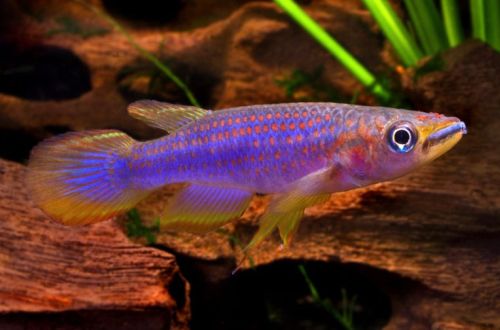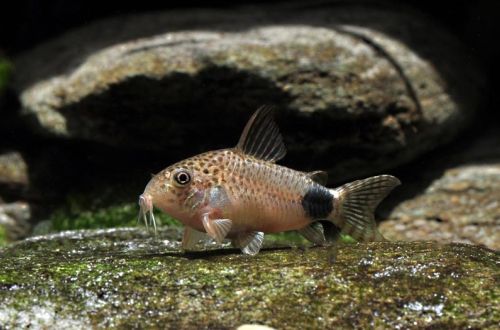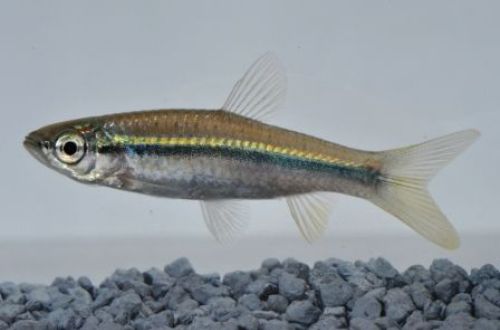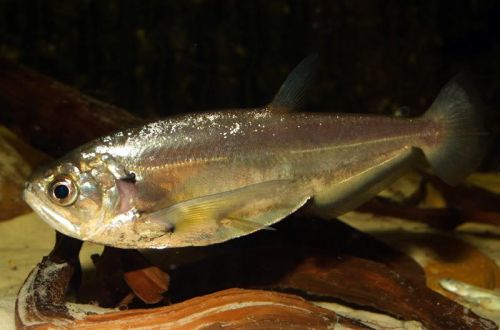
Epipletis lamotta
The red-spotted Panhax or Epiplatys lamotte, scientific name Epiplatys lamottei, belongs to the Nothobranchiidae family. Beautiful original fish, has an unusually colorful color for freshwater species, thanks to which many aquarists from all over the world fell in love with. Received a scientific designation relatively recently in 1954 and named after the researcher Lamott (M. Lamott), who collected the first samples.

Habitat
It comes from the African continent, the fish is common in the upper reaches and tributaries of the Niger River, in the territory of modern southeastern Guinea and northern Liberia. It lives in small streams and tributaries of larger rivers. Currently, the natural habitat is under threat due to active mining activities.
Description
There is a clear sexual dimorphism between males and females. Males are slightly larger than females, reach a length of 6 cm, have more extended fins and bright colors. Females, on the contrary, are noticeably more modest in size and richness of colors.
Food
In the wild, the Red-spotted Panhax is a carnivorous species, feeding on terrestrial and aquatic invertebrates and other zooplankton. In the aquarium, it will accept dry food of a suitable size (flakes, granules), as well as meat products – live or frozen – on a daily basis. For example, bloodworm, brine shrimp, daphnia, grindal worm, mosquito larvae, fruit flies, etc. Feed 2-3 times a day in an amount eaten in 5 minutes, uneaten residues should be removed.
Maintenance and care
A flock of several individuals will feel comfortable in a tank of about 100 liters, although a couple of fish will be quite able to be content with half of this volume. In any case, stick to the rule – the more the better.
In the design, it is desirable to recreate the natural area. Sandy ground with numerous shelters made of snags, branches and tree roots. Dry fallen leaves emphasize the natural look, in addition, they release humic substances necessary for fish into the water and serve as an additional source of food for fry, since, when decomposed, they contribute to the growth of a colony of microorganisms, such as shoe ciliates. In addition to the leaves, you can add alder cones. Leaves and cones should be regularly updated every 2 weeks. In the aquarium, dense thickets of plants, including floating ones, are placed in sections. Panhax prefers low light, so when choosing plants, give preference to shade-loving species.
The minimum set of equipment consists of a filtration system, an aerator and a heater. Lighting is selected based on the calculation of a small luminous flux. In a well-lit room, you can do without an additional light source in the aquarium. Water parameters – soft, slightly acidic or neutral. Read more about dGH and pH parameters in the “Hydrochemical composition of water” section.
Behavior
A peaceful, harmless species, it is necessary to select calm fish of similar size as neighbors. Active neighbors will force the Red-spotted Panhax to seek shelter, which will not have the best effect on his well-being due to constant stress.
Breeding / breeding
Spawning can be carried out in a common aquarium, no special conditions are required. It is worth remembering that other species can eat offspring, so it is still advisable to breed in a separate tank.
During the mating season, the male becomes brighter than usual, the behavior also changes – he begins to actively pursue females. This is a clear hint that spawning is coming soon and it’s time to plant a couple. In a spawning aquarium thickets of floating plants are obligatory. Any substrate, you can do without it at all. Equipment from a heater and a simple filter will be enough. the filter is set to low power so as not to create excessive flow. Water intake points should have sponge nozzles to prevent fry from accidentally entering the filtration system.
The female lays eggs near the surface in dense thickets of plants, where fertilization takes place. At the end of the process, the couple is returned to the common aquarium. The fry appear within a few days. Feed with microfood – Artemia nauplii and ciliates.
Fish diseases
Sufficiently hardy fish, no specific diseases inherent in this species have been noticed. Problems can only start in adverse conditions – poor water quality, poor nutrition, contact with already sick fish, etc. For more information on symptoms and treatments, see the Aquarium Fish Diseases section.





